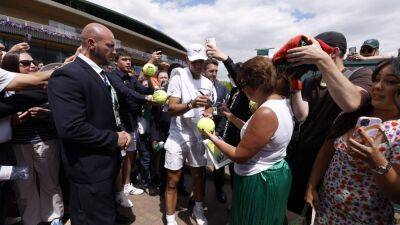Wimbledon courts chief has global vision for tennis on grass
Players only get the chance to compete on the surface for a few weeks each year, with clay and hard-court tournaments dominating international tours.
But Stubley, whose role is to keep the lush turf of Wimbledon in tip-top shape, is involved in trials in Britain and Australia using synthetic fibres alongside grass to improve court surfaces. "One of the biggest challenges for grass tennis is that you need quite a heavy clay soil because what you need to do is be able to dry it out and get the ball bounce," he said. "In the UK we've naturally got quite a lot of clay soil within our soil make-up, whereas in other parts of the world some countries are very much dominated by chalk or sand so they find it a lot harder to find the sort of soils that we naturally find in the UK." Stubley said using grass-stitching with sandier soils helps make the structure of the playing surface more stable and resilient. "You can actually have a more free-draining surface but you can still get the hardness on the surface as well so then you can go to places like Australia that have got very silty, sandy soils and create good grass courts, so that's part of our research." Stubley said the first aim was to make sure the new courts worked for tennis, reproducing the characteristics of a grass court. The head of courts and horticulture, who has worked at Wimbledon for nearly three decades, is passionate about promoting grass-court tennis. "We want to champion global grass tennis, not just for the Championships but hopefully you can potentially have tournaments in any country in the world, depending on whether it's a warm-season or a cool-season grass," he said. "We're doing a lot of research in southern hemisphere grasses, Bermuda grasses and the





